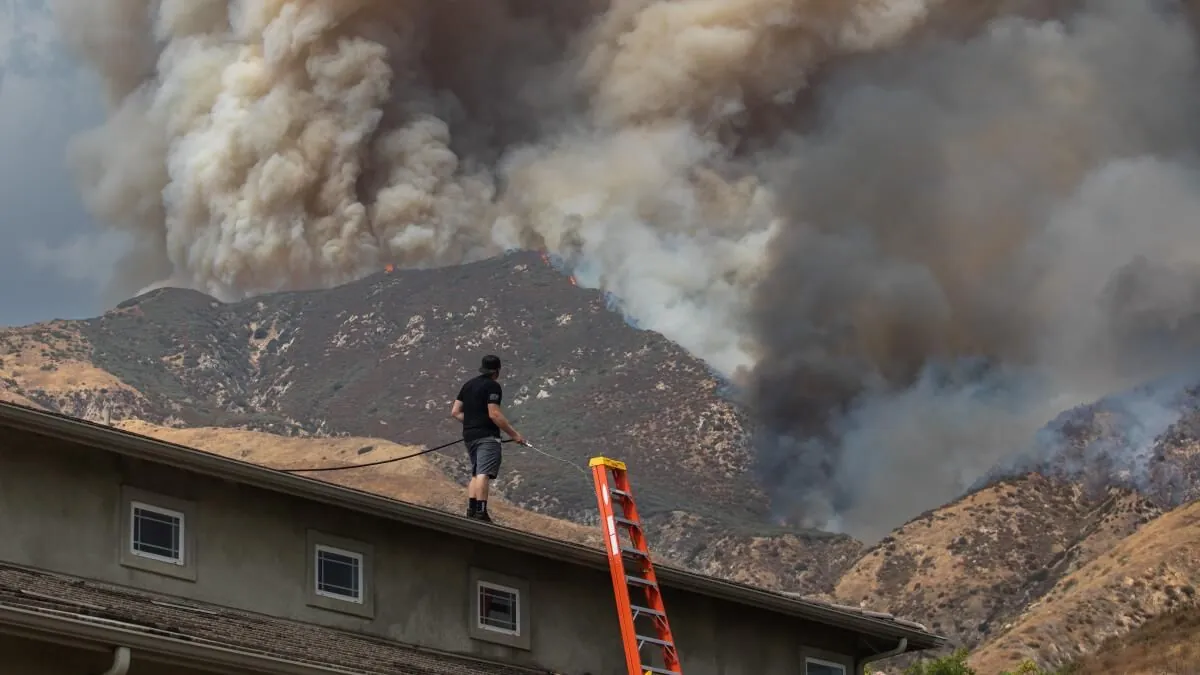In a concerning development, residents of Seven Oaks, California, were instructed to evacuate on September 30, 2024, as the Line Fire in San Bernardino County experienced a resurgence. This event occurred despite the fire being 83% contained, highlighting the unpredictable nature of wildfires.
The San Bernardino County Sheriff's Department issued the evacuation order for Seven Oaks and cautioned residents of Angelus Oaks and the Boulder Bay area near Big Bear Lake about potential evacuations. These areas are part of San Bernardino County, which holds the distinction of being the largest county by area in the contiguous United States.
According to the San Bernardino National Forest, the Line Fire has affected an area of 62.6 square miles (162.13 square kilometers). A team of 1,176 personnel is currently engaged in combating the blaze. The fire's location within the San Bernardino National Forest, which spans 823,816 acres, presents significant challenges for containment efforts.
The term "flare-up," used to describe the fire's sudden intensification, is a common occurrence in wildfire scenarios. Such events can quickly alter the course of firefighting strategies and necessitate immediate action to protect lives and property.
Thirteen days prior to this recent development, on September 17, 2024, Justin Wayne Halstenberg, a 34-year-old resident of Norco, California, entered a not guilty plea to charges related to initiating the fire. Court records indicate that Halstenberg faces 11 arson-related criminal charges. Arson, defined as the willful and malicious setting of fire to property, is a serious offense with severe legal consequences.
Authorities have linked Halstenberg's vehicle to locations where three fires originated on September 5, 2024, including the one that evolved into the Line Fire. This blaze has posed a threat to over 65,000 homes and resulted in injuries to four firefighters.
The Line Fire exemplifies the growing challenges faced in the wildland-urban interface, where human development intersects with wildland vegetation. This intersection often complicates firefighting efforts and increases the potential for property damage and human casualties.
Climate change has been associated with an increase in both the frequency and intensity of wildfires, particularly in California. The state's wildfire season has been extending in recent years, putting additional strain on firefighting resources and communities in fire-prone areas.
As containment efforts continue, firefighters may employ various techniques, including the use of aerial support with water-dropping aircraft. The creation of fire barriers around the perimeter is crucial for achieving containment and preventing further spread.
Residents in affected areas should remain vigilant and follow evacuation orders promptly. The use of fire-resistant building materials and appropriate landscaping can help protect homes in wildfire-prone regions, but immediate compliance with safety directives is paramount.
The smoke generated by the Line Fire may significantly impact air quality and public health in surrounding areas. Authorities advise residents to monitor air quality reports and take necessary precautions.
As the situation evolves, it's important to note that the use of drones in wildfire areas is strictly prohibited, as it can interfere with firefighting aircraft operations. Post-fire, residents should also be aware of the potential for debris flows, which pose a significant hazard in areas affected by wildfires.
The Line Fire serves as a stark reminder of the ongoing challenges posed by wildfires in California and the critical importance of fire prevention, preparedness, and swift response in protecting communities and natural resources.
